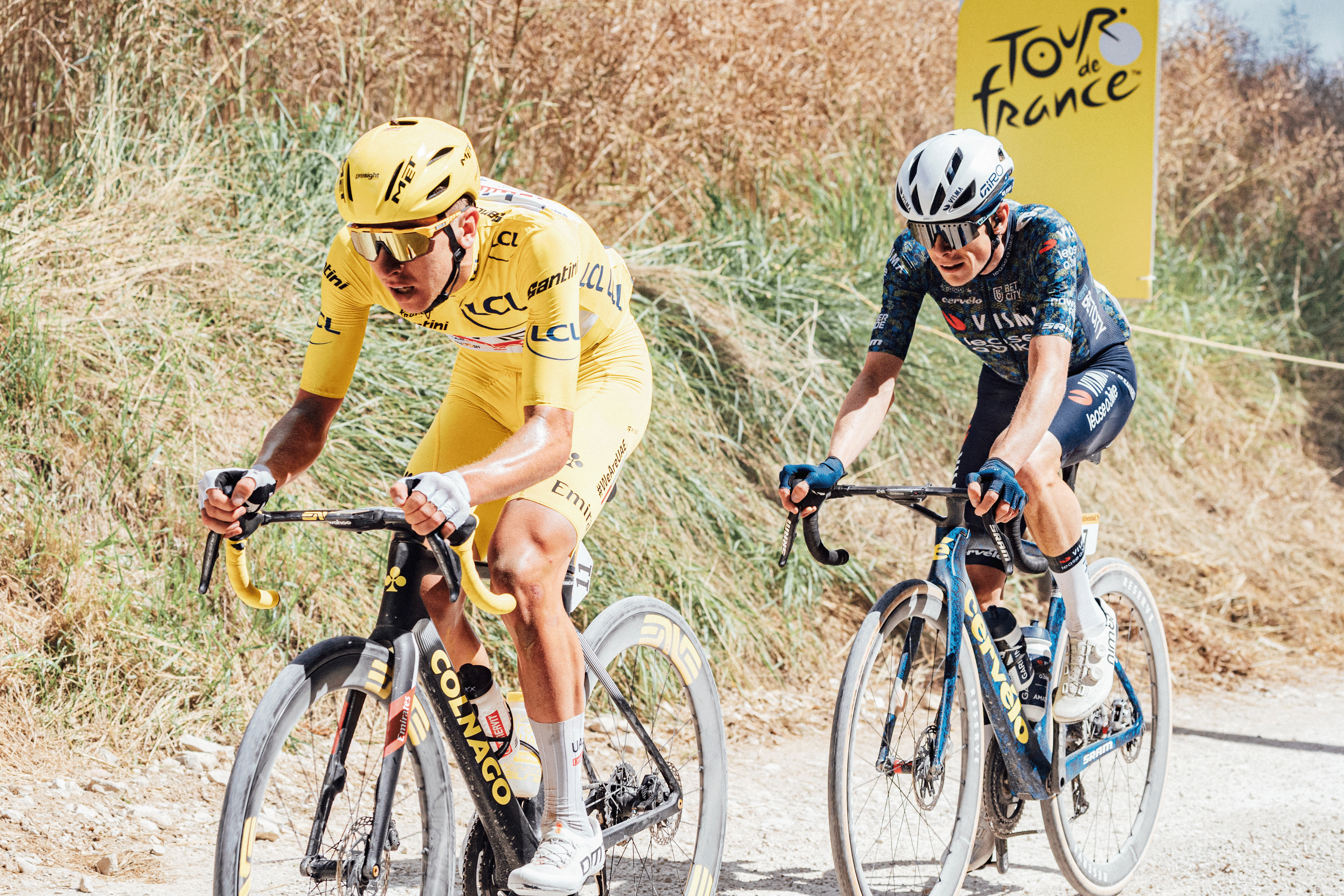
Weighty chapters of Tour de France history have been built around duels, but the great bike race has never seen a duopoly like this one. Almost inevitably, and for the fourth year in succession, Tadej Pogačar and Jonas Vingegaard occupied the top two steps on the podium at the end of three weeks.
Pogačar’s third Tour victory saw him level his head-to-head series with Vingegaard at 2-2, and at this juncture, few would wager against the contest repeating itself in July 2025 – even if Remco Evenepoel’s fine debut and clear margin for improvement gives him ample to reason to believe he can eventually muscle in on their territory.
As ever, this was a Tour of multiple stories, from Evenepoel’s élan to Primož Roglič’s seemingly unlimited capacity for heartbreak in this race. Biniam Girmay’s sparkling sprints led to a richly deserved green jersey. In Saint-Vulbas, Mark Cavendish seized his chance to claim outright possession of the record for Tour stage wins, surpassing Eddy Merckx himself.
Despite a crash-blighted build-up, Richard Carapaz illuminated the race with his aggression. Romain Bardet signed off on his Tour career with a yellow jersey. Arnaud Démare earned admirers for battling bravely but unsuccessfully to finish inside the time cut.
From the climb of the San Luca on stage 2, however, it quickly became apparent that the fight for the overall victory would be distilled to two familiar names. We take a look at the defining moments of the fourth instalment of the Pogačar-Vingegaard duel.
Pogačar begins prising the Tour de France apart on the Galibier
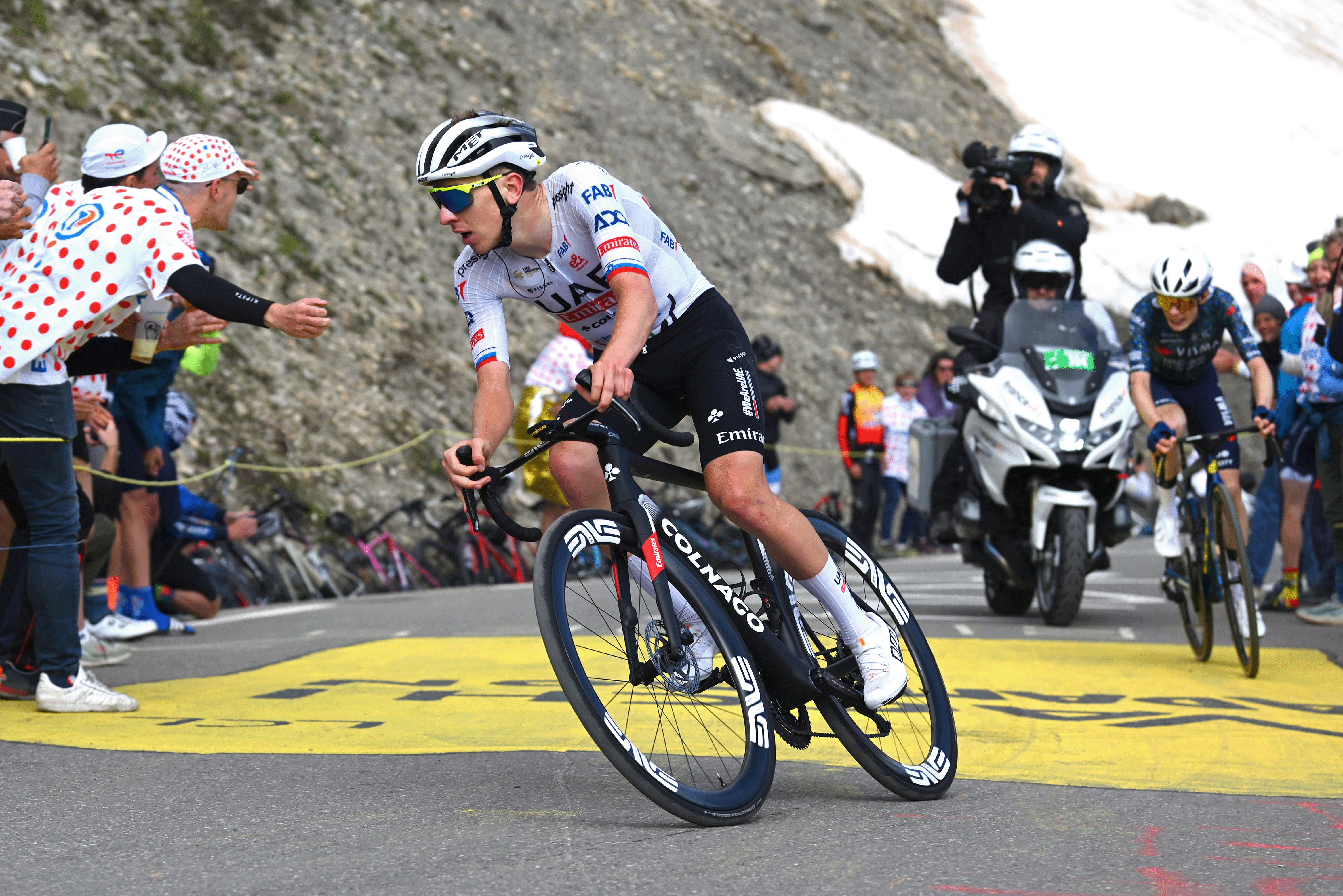
For some outside observers, the 2024 Tour de France GC battle had been supposed to start and end in Italy. By stage 4 and the ascent of the Galibier, according to experienced and outspoken French sports director Marc Madiot in his pre-race interviews, Tadej Pogačar would have wiped out any traces of GC opposition and the battle for the stage wins and minor classifications should have been well underway.
It hadn’t happened. On stage 1, a show of strength by UAE on the brutally difficult series of climbs out of the Grand Départ at Firenze had been called off halfway through. Instead, the breakaways and a smaller group of sprinters battled it out for the first stage win of the Tour, with Romain Bardet and DSM-Firmenich-PostNL teammate Frank van den Broek dramatically fending off the chase. Then on stage 2, Pogačar again failed to launch one of his expected long-distance solo moves over the repeat ascents of the brutally steep San Luca climb in Bologna and instead his much shorter attack brought an equally committed response from arch-rival Jonas Vingegaard (Visma-Lease A Bike).
So if Madiot had got it wrong, the next obvious flashpoint was the horrendously difficult, punchy Alpine trek on stage 4. Preceded by the interminable but largely manageable ascent to Sestriere and then the much shorter cat. 2 climb of the Montgenèvre on the French side of the Alpine border, it barely mattered that the Galibier was then tackled on its ‘easier’, southern approach road. Albeit by just a day compared to the 2023 Tour’s first-week incursion into the Pyrenees, there had never been such a tough stage so early on in the race. And by this point, Pogačar’s relatively unhurried (or ineffectual, depending on how you looked at it) start to the Tour had begun to create a rash of question marks.
However, that all changed on the 26-kilometre Galibier. In the build-up, EF Education-EasyPost set down a fairly steady controlling pace on the Sestriere for race leader Richard Carapaz, but when the Tour returned to France, it was UAE teammates Nils Politt, Pavel Sivakov and Tim Wellens who began the heavy lifting for Pogačar.
The UAE show of strength continued all the way out of the mountain city of Briançon and onto the interminably long drag of the unclassified Col de Lauteret. In a repetition of the mountain stages to come, too, an oversized, overly disorganised breakaway slowly crumbled to bits as their lead ebbed away, and by the time they reached the infamous righthand turn off the A-road and onto the much more difficult upper slopes of the Galibier, for all Oier Lazkano (Movistar) was still bravely trying to keep clear, it was clear that the winner of the day would come from the bunch.
More than Pogačar, initially the real stars of the Galibier was his team. The coordination wasn’t absolutely perfect, given the way João Almeida yelled at Juan Ayuso to come to the front and pull. But the effect of the accelerations by the Portuguese and Spanish riders, not to mention last year’s podium finisher and stage 1 winner Adam Yates was devastating.
The first of the big names to get dropped thanks to the collective UAE pressure was Simon Yates (Jayco-AIUIa), fourth in the Tour de France last year, and at that point an outsider for the podium at least. Others like Egan Bernal and Geraint Thomas (Ineos Grenadiers) were long out of the picture, but when Primož Roglič (Red Bull-Bora-Hansgrohe) looked to be in trouble and Remco Evenepoel (Soudal-QuickStep) also started to flounder slightly the damage was impressive. Finally, it was up to Pogačar himself, delaying his acceleration until well into the closing kilometre because of a headwind, he later claimed, although such a late assault on power in the Tour by such a typically impulsive attacker sparked no end of rumours about his underlying condition. Sloping away around the final corners leading to the top of the snow-lined climb, Evenepoel initially responded but Vingegaard was the closest to follow Pogačar - in the second confirmation after San Luca who would be his toughest rival to crack. But crack Vingegaard did, albeit by a handful of seconds at the summit.
With the glorious benefit of hindsight, the way that Pogačar subsequently gained far more time on the descent was perhaps far more significant than it initially seemed. You could see that Vingegaard had had enough pure strength to keep the gap on Pogačar to a relative minimum on the climbs, provided that distance was relatively short. However what the much bigger time loss on the descent arguably demonstrated was he was lacking the endurance capacity that only 12 weeks of full Tour de France preparation can give, and once pushed to his limit by Pogačar, that lack of underlying endurance condition truly made itself felt.
Secondly, there was a real dearth of support for Vingegaard from his team on the Galibier. While Matteo Jorgenson was clearly stretching himself hard and well to help the Dane, he fell foul of the UAE mass climbing, and the absence of a Sepp Kuss or Roglič or Steven Kruijswijk from the 2024 Tour playbook for Visma-Lease A Bike to back Vingegaard on the Galibier was noticeable. Wout van Aert, himself on the recovery trail from a bad crash this March like Vingegaard was nowhere near his monumental 2022 self on the Tour’s mountain stages. Instead after a fruitless chase, Vingegaard eventually had to rely on external support from temporary allies like Evenepoel to limit the gaps. In stark comparison, UAE Team Emirates were operating at their best collective level of any Tour de France, whittling down the lead group to just eight before Pogačar finally attacked. Both individually, and in terms of his squad, then, Pogačar was on a much better footing than the defending Tour champion. And the Galibier was where it showed first.
Mixed reactions to gravel
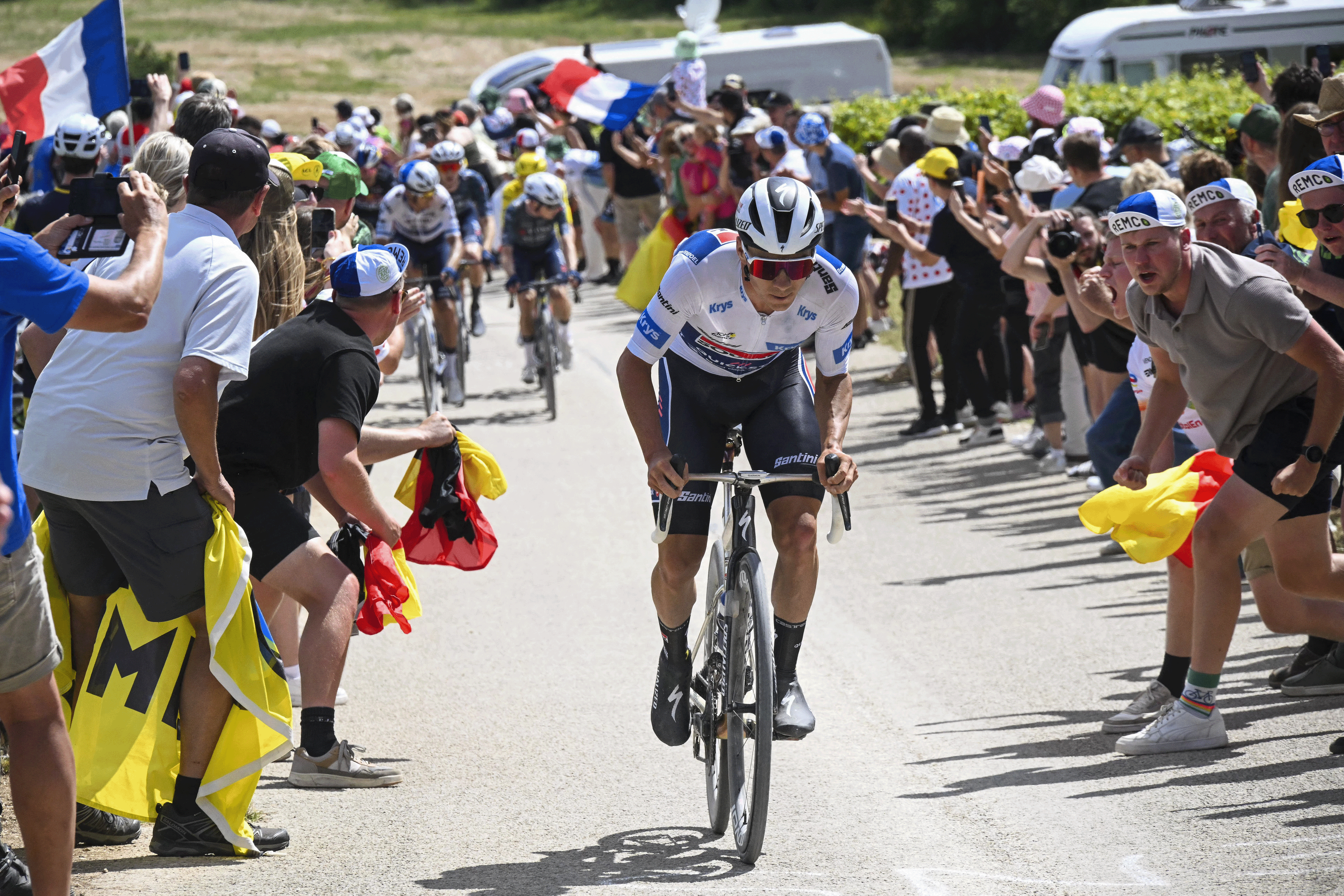
Most Tour de France contenders don’t like the dangers and unpredictability of gravel stages but they will surely face them and far more often in the years to come after the spectacular racing on the Burgundy chemins blancs' on stage 9 near Troyes.
Anthony Turgis beat Tom Pidock and Derek Gee after a 156 km breakaway to give TotalEnergies a historic victory. However, there was equally dramatic racing and equally high emotion amongst the GC contenders on the dry, dusty and even rocky roads.
Tadej Pogačar fired off several audacious attacks and was joined by Remco Evenepoel and Jonas Vingegaard with 77 km still to race. “The whole Tour could have been decided” Evenepoel suggested but Vingegaard opted not to ride so the trio sat up and returned to the peloton.
Late on in the stage, with just 17 km to go, Pogačar made another all–in attack and Vingegaard only got across to him thanks to huge efforts by Christophe Laporte and Jorgenson. Evenepoel and Roglič were distanced but again, Vingegaard did not want to go mano-a-mano with the Slovenian and so sat on.
At the finish, Vingegaard avoided losing any time to Pogačar, despite also racing the last 100km on teammate Jan Tranik’s bike, and so Visma-Lease a Bike suggested even landed a morale-boosting blow on their rivals and especially on Pogačar.
Evenepoel was not so impressed.
"We have to accept race tactics and race situations, but sometimes you also need the balls to race, and unfortunately maybe Jonas didn't have them today,” Evenepoel said.
Vingegaard took a different view on the stage but responded to the young Belgian.
“It wasn't a lack of "balls", I just rode smart. We were mainly focused on not losing time," Vingegaard said, determined to take the fight to Pogačar and Evenepoel each and every day.
The Troyes gravel stage epitomised Vingegaard’s 2024 Tour de France.
He was coming back from a terrible crash, with limited time to train. Yet he and Visma-Lease a Bike raced as they wanted, riding mostly defensively but never afraid to try something or to suffer, be it in the high mountains or on the gravel roads of central France.
Vingegaard’s false dawn at Le Lioran
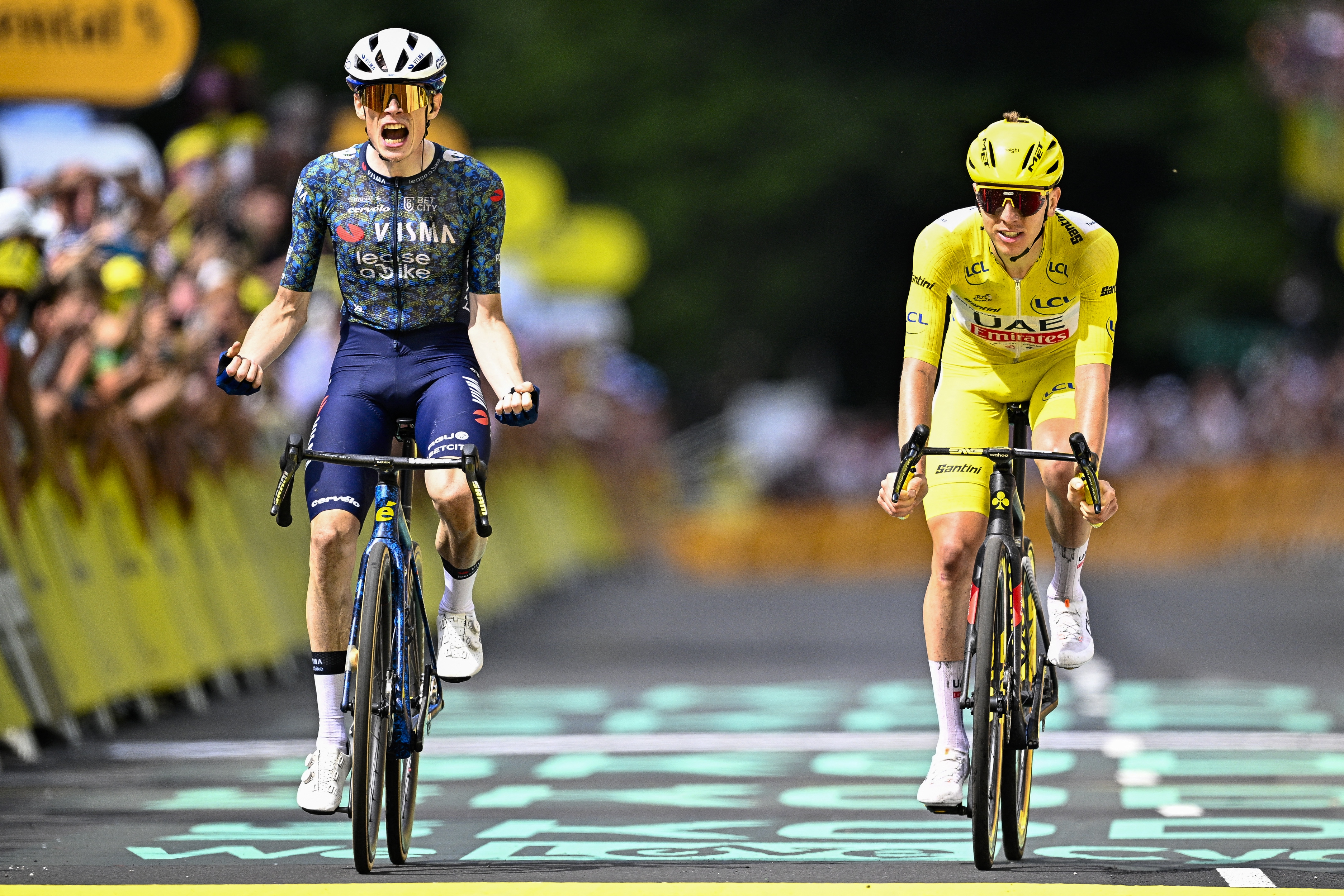
History is a tale told by the winners, as the cliché puts it, and in the last 10 days of the Tour, such has been Tadej Pogačar’s dominance that the doubts that must have assailed the maillot jaune and his team after the events of Le Lioran have all but faded from memory.
Until that little-known finish in the Massif Centrale, last visited by the race in 2016, the Tour had been a stalemate with Pogačar narrowly ahead on points, an advantage that left ample room for recollections of the way Vingegaard swept the field in 2023. True, Pogačar had made an impressive attack on the San Luca, only for Vingegaard, the rider from the ‘Big Four’ with the best Tour track record bar the Slovenian himself, to respond. Yes, Pogačar had gained time on the Galibier but rather than being a minute or two, the difference was measured in seconds. He’d beaten Vingegaard in the time trial but by less than 30 seconds. Each time when Vingegaard claimed the damage was far less than he expected, it was hard to fault the Dane, and each time the doubts rose higher around Pogačar’s potential to do the historically ultra-challenging ‘double’.
Stage 11 to Le Lioran, a constantly undulating day of 211 kilometres of racing through remote roads of central France’s main mountain range, was supposed to change that. After the relentless driving by UAE Team Emirates on the cat. 2 Col de Néronne, a further ratcheting up of the pace by Adam Yates and a devastating initial attack by Pogačar on the horrendously difficult ascent to Puy Mary Pas de Peyrol seemed, finally, to have cracked Vingegaard. Compared to the paltry advances at the summit of the Galibier, Pogačar’s rasping acceleration on a day of more than 4,000 metres of climbing gained more than 30 seconds at one point. But then the unthinkable happened, as once over the summit and onto the next climb just a handful of kilometres further on, Pogačar began looking back repeatedly, and visibly hesitated.
The whys and wherefores of his nervous actions and sudden halt to his usual fluid pedalling style have been buried under multiple overlapping interpretations and explanations. They range from his uncertainty about the full race route and the distance to the finish to a lack of information as to who was chasing to a brief (and unresolved) problem with his back wheel, which he mistakenly thought had punctured to a rumoured forgetting to refuel just like in the Col du Granon in 2022. None of these has been fully confirmed by UAE Team Emirates, but whatever the reason, the scenario felt completely bizarre: here was Pogačar alone and ahead of the field - why didn’t he just do what he’d done on multiple occasions, from Strade Bianche to half a dozen occasions in the Giro, and drive home his advantage?
Instead, as Pogačar slowed notably, it was to find that Jonas Vingegaard had bounced off the canvas in style, weaving through the mist to come within reach of Pogačar again well before the summit of the cat.2 climb that followed, Le Pertus. The Slovenian sprinted for the time bonus at the summit of the Pertus, beating Vingegaard, but in a race that was always going to be won by minutes not seconds, scrabbling for such small advantages felt like he was clutching at straws.
And it got worse. After picking their way up the final climb to Le Lioran, Pogačar put up a spirited defence against Vingegaard in the sprint, only to be defeated. Adding up the time bonuses, Vingegaard only closed the gap by one second, but it was a massive psychological blow and one which allowed Vingegaard, as he confirmed after the Tour was over, to think that he had a real chance of winning outright. Even as Le Lioran all but confirmed that the Tour was essentially a two-man duel given Roglič’s difficulties and Evenepoel’s preference to ride conservatively rather than risk his podium, suddenly seemed impossible to choose between Vingegaard and Pogačar as leading favourite.
That would all change yet again, and decisively in Pogačar’s favour, on the two big days in the Pyrenees. But after stage 11 there was no lack of media reports suggesting that Pogačar had overreached, that by the end of the Pyrenees, the jersey would be on Vingegaard’s shoulders, that Le Lioran marked a real turning point and that the momentum was now with the Dane. Many observers thought that the race would not be decided at least until the final Alpine stages or even the last time trial in Nice. How wrong we all were - but how right it felt at the time.
Pogačar completes Pyrenean power play at Plateau de Beille
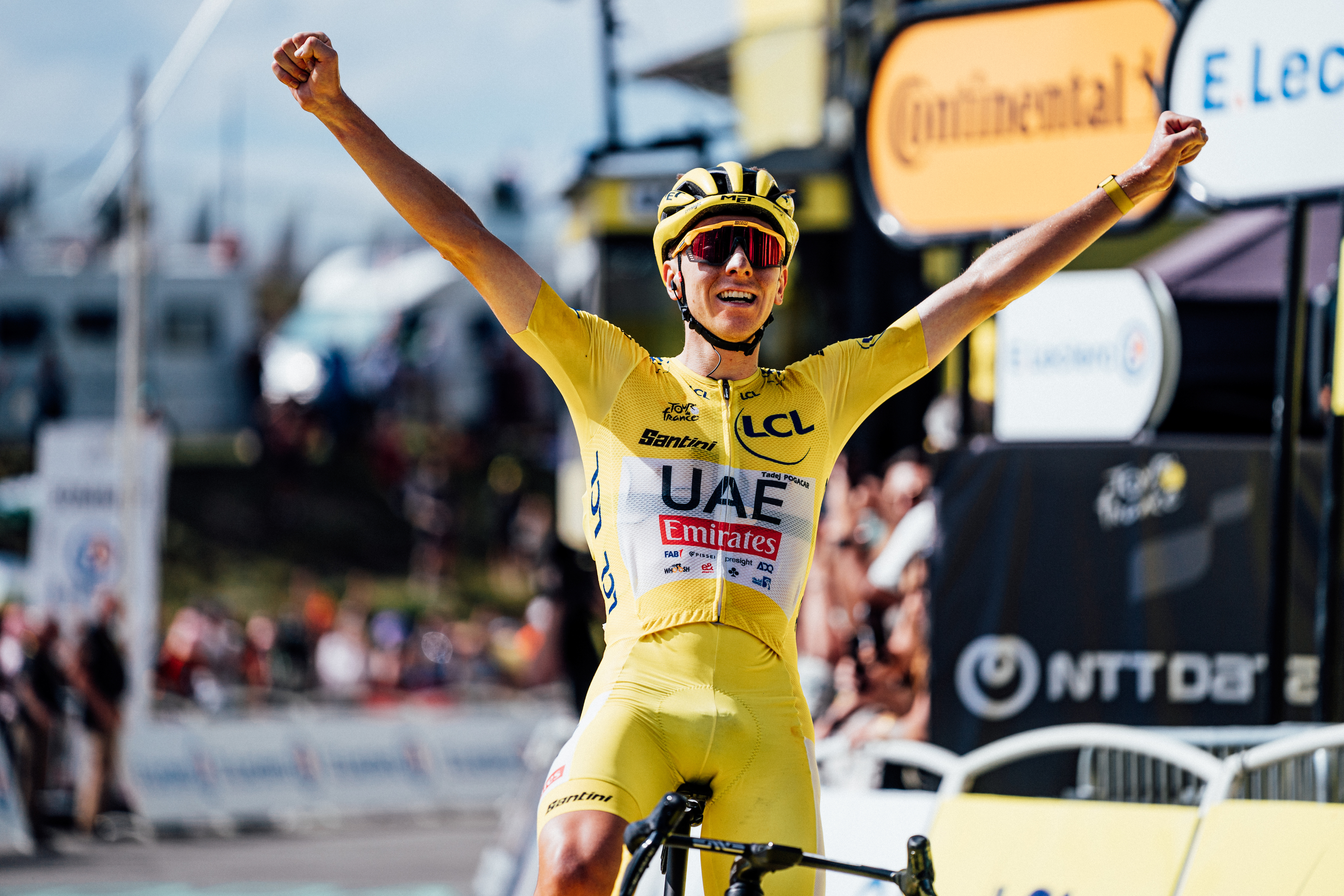
If the scales had looked to be tipping towards Vingegaard in the Massif Central, then the Tour’s Pyrenean doubleheader proved to be the moment the balance swung definitively back into Pogačar’s favour. From there to Nice, he would be without peer.
Pogačar’s victory at Pla d’Adet on stage 14 was already a hefty blow, but hardly decisive. The 39 seconds he picked up there stretched his overall lead to just shy of two minutes, but outside the Visma bus that evening, Vingegaard evinced quiet confidence that things would be different on the road to Plateau de Beille 24 hours later.
Vingegaard’s reasoning was that his powers of endurance would be rewarded at the end of a longer and tougher stage. With that in mind, he deployed teammate Matteo Jorgenson to set a ferocious pace from the base of the climb before he accelerated viciously with over 10km still to go in a bid to outlast Pogačar.
By his own telling – and per most external estimates of his power data – Vingegaard produced arguably the best climbing performance of his career at Plateau de Beille. The problem was that he was competing against a very different Pogačar to the one he defeated so soundly the past two Julys. If Pogačar has soared to startling new levels of performance this summer, then Plateau de Beille was the apotheosis.
With 5.5km to race, Pogačar attacked to put another minute into Vingegaard and almost three into Evenepoel. The rest of the Tour was scattered across the mountainside, with only 21 men finishing within 20 minutes of the yellow jersey.
If the time gaps to his contemporaries told a clear story, the precise meaning of the comparisons between Pogačar and previous generations was less certain. When it emerged that Pogačar had put an estimated 3:40 into Marco Pantani’s 1998 Plateau de Beille record, a familiar and seemingly unresolvable debate broke out.
For some, the performances of the leading riders on this Tour raised the gravest of suspicions. For others, their speed was simply a byproduct of the various technological, nutritional and training advances that cycling has experienced in recent years. It was all in the eye of the beholder. Same as it ever was.
“There will always be doubts, for sure, because cycling was so much damaged in the past, before my time,” Pogačar said in Nice on Sunday evening.
Everybody can surely agree that cycling has accelerated sharply in the 2020s, with the very nature of top-level racing has mutated dramatically before our eyes. As ever, the onus is on the UCI to step up its efforts to guarantee the credibility of what we’re watching.
Vingegaard’s challenge is quietly extinguished on the Bonette
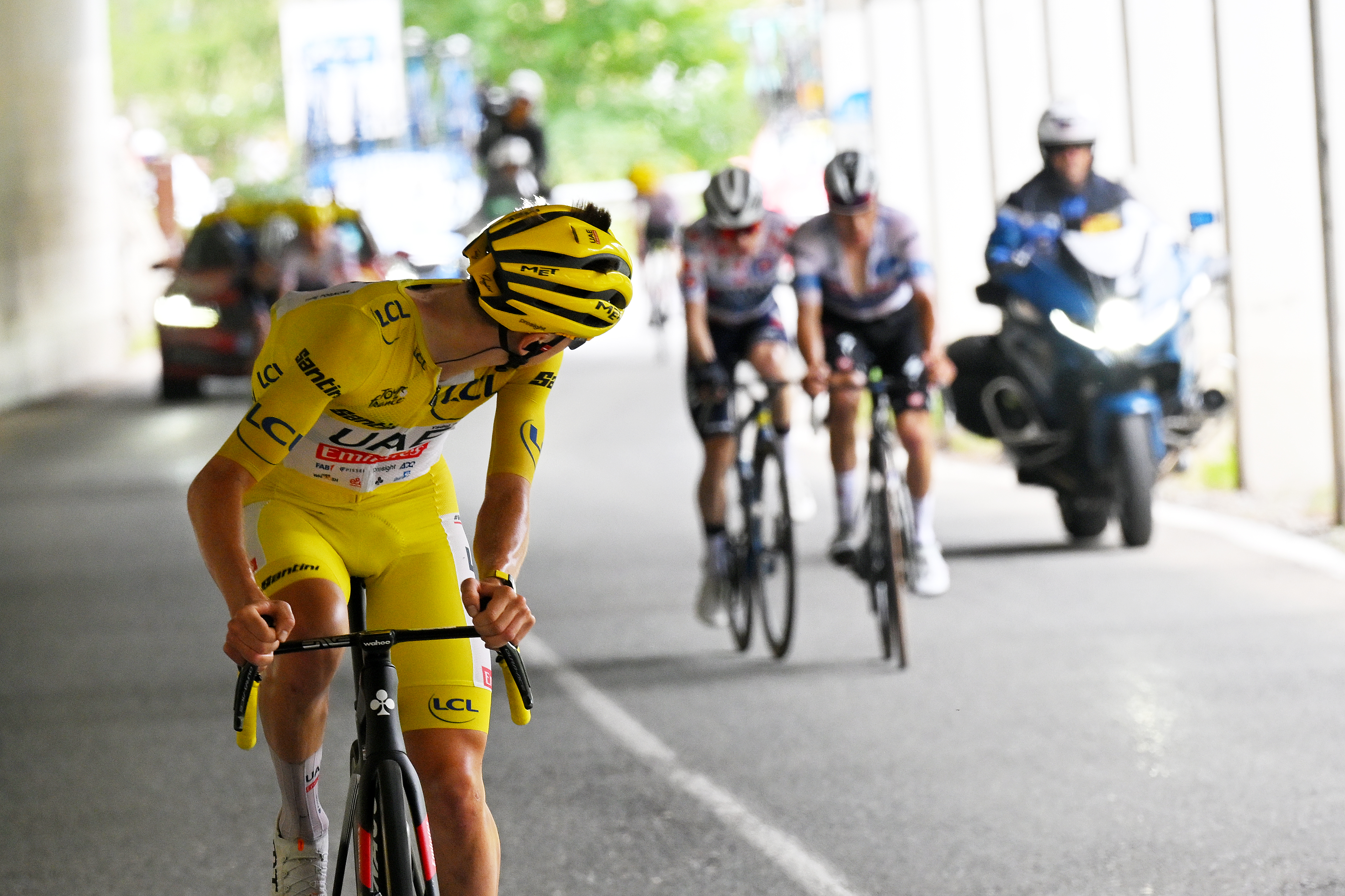
Pogačar may effectively have won the Tour at Plateau de Beille, but it took five more days for Vingegaard to concede defeat. After overcoming a punctured lung and multiple fractures just to ride this Tour, Vingegaard was never likely to lay down his arms at that early juncture. As the third week dawned, he and his Visma team clung to their belief in his gifts of endurance and his superiority at high altitude.
In particular, Visma were looking to the arduous stage 19, which brought the race over the Col de Vars and the Cime de la Bonette ahead of the tough finish to Isola 2000. The 2,800m-high Bonette, in particular, seemed the obvious place for a Visma onslaught, much like the ones they unleashed on Pogačar on the Galibier in 2022 and on the Col de la Loze last year.
Indeed, Pogačar had predicted as much during his rest day press conference, when he stated his belief that Visma would go all-in on one or other of the final days in the Alps. When Matteo Jorgenson, Wilco Kelderman and Christophe Laporte forged clear in the opening kilometres of stage 19, it was clear that Visma’s special play was taking shape.
The Hail Mary pass never came, however. Although Kelderman and Jorgenson were still in the break on the upper reaches of the Bonette, the anticipated Vingegaard attack would not materialise. Midway up the climb, Vingegaard quietly informed his Visma teammates over the radio that he simply did not have the legs to execute the plan.
Exactly one year earlier, Pogačar’s 2023 Tour challenge had ended on the Col de la Loze, immortalised by the words he pronounced over the radio: “I’m gone, I’m dead.” Visma’s decision to withdraw their radio communication from television broadcasts meant that Vingegaard’s words here remained private. No matter, when the Bonette came and went without a Vingegaard attack, everybody understood the Tour had ended as a contest.
All that remained was for Pogačar to run up the score, even if he insisted that he was not racing to take revenge for his defeats of the previous two years. After soaring clear to win at Isola 2000, he doubled down on the Col de la Couillole a day later, when he tracked Vingegaard’s acceleration and then blasted past him inside the final kilometre. Inevitably, Pogačar added the final time trial in Nice. In the final reckoning, his dominance was total.







